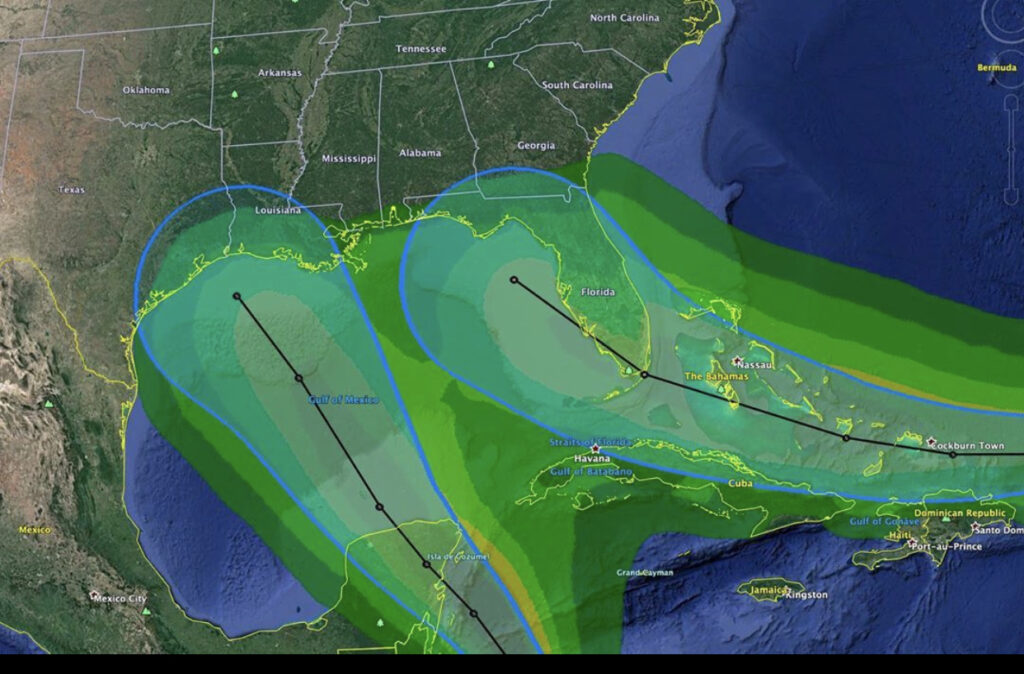Major Hurricane Laura made landfall south of Lake Charles, Louisiana, early August 27 as a Category 4 storm with sustained winds in the eyewall at over 152 MPH. Storm surge to the northeast of the eye was between 15 and 21 feet with wave action on top of that, causing catastrophic coastal damage in southwest Louisiana. This storm is moving inland and will be affecting Arkansas, Tennessee, Kentucky, West Virginia, Virginia and the mid Atlantic states over the next few days. This storm will carry tropical storm force winds inland and will dump substantial rain with some flooding, gusty winds and some tornadoes through the weekend along it’s track. The death toll is climbing and damage reports are starting to come in.
Refer to Local, State and National news media and the National Weather Service for additional details.
https://www.weather.gov/
===============================================
“These are not official advisories. These updates and advisories are based upon information from our own computer models, NOAA, Local Weather Data Centers, deep water Buoy Data, and other publicly available sources. FOR THE SAFETY OF YOUR PROPERTY AND PERSON, please refer to your Local, State, and Federal Authority updates for Official Advisories and Orders. For up to the minute advisories and official updates, it is essential that you monitor your local Emergency Government, NOAA and Local Media Broadcasts. Please do not make personal safety decisions based upon information presented here.”
www.gulfstorm.net
Tropical Storm Research Center, Gulf Shores, Alabama
=============================================

